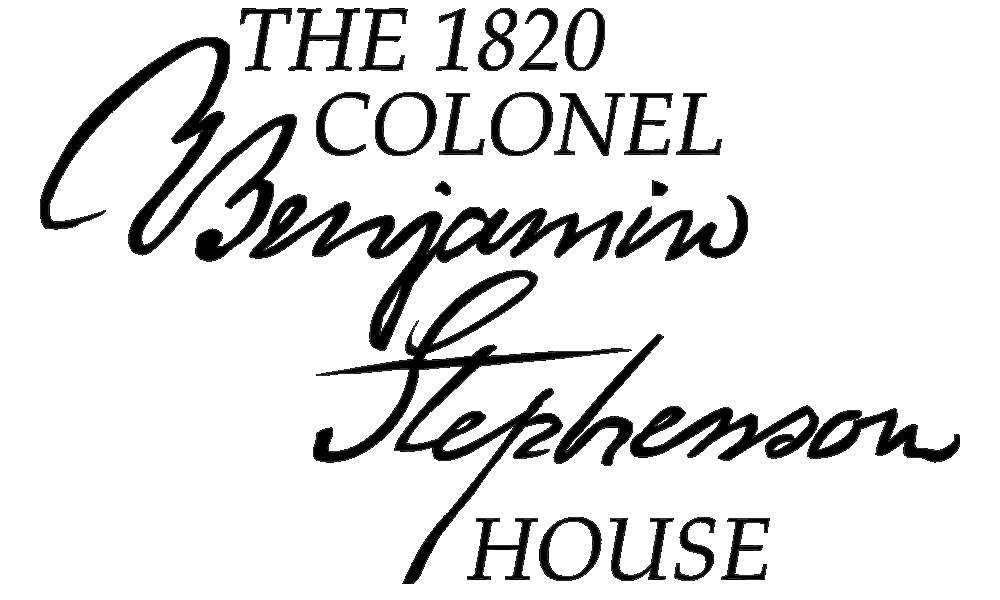|
INSIDE THE STEPHENSON HOUSE - November 14, 2002
Hi! Henry the Stephenson House mouse is back again. By
golly, the Burgoo Day really made me happy. So many things I like were
here including good people, good food, good music and fresh churned butter.
What a day!
Since the Burgoo Day ole' Henry here has just been hangin'
out. I know E.J. and the guys will soon be here to put in more windows
and I heard a great rumor that volunteers might come here to paint those
windows! One more rumor I heard was that a real, working furnace will
be installed in "my" house before winter. I would sure like
that! Hope these rumors come true.
OK. Lets talk some more about the trial of The People
vs Winchester. We know Palemon Winchester was tried for the murder of
Daniel D. Smith, Record of Pike County, and formerly from Edwardsville.
James W. Stephenson and James D. Henry were charged with the murder and
then released on bond
Well, Karen checked the trial records in the Madison County
Court House and they are somewhat like Great grandpappy Samuel and Grandpappy
Amos because they don't say too much. Reckon when you have to write with
a quill pen you do not write a lot. She said the records available today
give a brief daily record of the trial and few other details. Neither
the court records nor the Spectator described a motive for the murder.
The Spectator just reported that Daniel D. Smith had been "killed
in an affray" here in Edwardsville. On March 22, 1825, the Spectator
reported a jury had found Winchester "Not Guilty". The court
records identified the following men as the jurors: Aaron Armstrong, Cyrus
Gillham, William Bennet, Martin Jones, William Griffin, William Jasper,
Westley Dugger, Joseph Howard, Washington Parkinson, Richard Long, James
Tunnel and John Prickett. The presiding judge was the Honorable Samuel
McRoberts.
But, what was the trial really about? Why did anyone,
Winchester or anyone else, want to kill Daniel D. Smith? Well, Henry has
heard that many thought Smith's murder was not about words spoken in an
argument about General Jackson but about a caricature Smith had drawn
and shown several years before when he lived in Edwardsville. The caricature
implied intimacy between Lucy Stephenson and Gov. Ninian Edwards, which
at that time was called 'criminal intimacy". Many thought Winchester
had been angry about this matter for a long time.
Louise Travous, a lady historian of long ago Edwardsville,
speculated Smith drew the caricature of Lucy and Ninian shortly before
his murder. The Ninian Edwards family lived at Lucy's house after the
Edwards home had been destroyed by fire. It has always been said that
the Edwards home, located at the corner of Vandalia and Fillmore, burned
in 1824. The murder happened in January 1825, which is at the time the
Edwards family would have been living at the Stephenson House. An actual
written record stating the date of the Edwards fire has not been located.
But, the caricature, the fire, the Edwards family seeking a temporary
home with Lucy Stephenson and the date of the murder all seem to makes
Ms. Travous idea fit.
What happened to the men initially charged with the murder?
Well, after the jury found Palemon Winchester not guilty, life went on
for all involved. Within a short time all three men left Edwardsville.
Ole' Henry checked around to get the facts about these men. James W. Stephenson
left for Galena, Illinois, where he became a successful politician eventually
running for governor. James died young, leaving a wife and two children.
James D. Henry, when in Edwardsville, revealed a brutal, revengeful personality
with great physical strength earning him a reputation as dangerous. That
was the dark side of his character. He was also intense and longed for
military fame. After the trial he moved to Springfield and was elected
Sheriff of Sangamon County. The Black Hawk War gave him his opportunity
for military fame and he became known as the most successful general of
the war. But, James Henry was sometimes gloomy and melancholy and often
indulged in long periods of intoxication. He died alone in New Orleans
in 1834. He had not told anyone there that he was the General James D.
Henry of the Black Hawk War.
Palemon Winchester, the husband of Julia Stephenson, was
a talented young lawyer but he enjoyed socializing and imbibing. Several
years after the trial Palemon and his family moved to Carlinville where
he opened a store, became a Major in the Black Hawk War and a probate
judge. Cousin Seth from Carlinville said that if Palemon had turned his
attention to politics he might have been successful. Seth says there are
stories that Palemon sank so low in intemperance he died in near poverty.
Cousin Seth also says Palemon was known as a friend to everyone and generously
served his friends as best he and his finances allowed.
Was Smith's murder over the merits of General Jackson
or over a naughty caricature of Lucy and Ninian? Henry thinks each person
will have to decide for himself. But then again, someday the original
trial records may be found and then we will all know for sure what the
real motive was.
The other day I overheard Mary and her Special Events
Committee talking about decorated Christmas trees, a silent auction, the
Specialty Shops and the Stephenson House. Sounds interesting and I am
going to keep my ear to the ground for more information.
I sure am hungry for peanuts! Think I will check out the
neighborhood to see what I can find.
See ya' later,
Henry
|



